#prompts blog
Text
Let’s Draw! Week 2.
Doppelgänger
Bifurcation
Take A Second Look
Four-Eyes
Stolen Face
Cold Metal
Decapitation

7 notes
·
View notes
Text
Random prompt #76
"I've waited millennia for you to come back to me... Why are you hiding from me?"
"Because, unlike you, I miss the comfortable mortal life!"
"Do you not miss me then? You still insist choosing humans who would fear the real you over me, dear beloved?"
"I do miss you, but I can't live another century in that stiffy temple of yours, dearest."
#dialogue ideas#dialogue prompt#dialogue prompts#prompts#page's prompts#prompt list#fanfiction prompts#romance prompts#otp prompts#fluff prompts#god prompts#goddess prompts#immortal prompts#person a and person b#imagine your otp#writing prompts#writeblr#writers of tumblr#prompts blog
178 notes
·
View notes
Text
"AO3 doesn't need a "dislike" button"
Um, actually, it already has one. Depending on your specs, it might look a little different but over all it looks kinda like this:


You can find it at the corner of your screen, which corner is dependent on your layout.
Anyway, if you dislike a fic, you can hit this Dislike Button until the fic goes away. It really is pretty amazing actually.
#just blog stuff#ao3#this is a joke except it isn't#nothing prompted this everything is fine don't even worry about it
16K notes
·
View notes
Text
Gentle reminder that very little fandom labor is automated, because I think people forget that a lot.
That blog with a tagging system you love? A person curates those tags by hand.
That rec blog with a great organization scheme and pretty graphics? Someone designed and implemented that organization scheme and made those graphics.
That network that posts a cool variety of stuff? People track down all that variety and queue it by hand, and other people made all the individual pieces.
That post with umpteen links to helpful resources, and information about them? Someone gathered those links, researched the sources, wrote up the information about them.
That graphic about fandom statistics? Someone compiled those statistics, analyzed them, organized them, figured out a useful way to convey the information to others, and made the post.
That event that you think looks neat? Someone wrote the rules, created the blogs and Discords, designed the graphics, did their best to promo the event so it'd succeed.
None of this was done automatically. None of it just appears whole out of the internet ether.
I think everyone realizes that fic writing and fanart creation are work, and at least some folks have got it through their heads that gif creation and graphics and moodboards take effort, and meta is usually respected for the effort that goes into it, at least as far as I've seen, but I feel like a lot of people don't really get how much labor goes into curation, too.
If people are creating resources, curating content, organizing the creations of others, gathering information, and doing other fandom activities that aren't necessarily the direct action of creation, they're doing a lot of fandom labor, and it's often largely unrecognized.
Celebrate fan work!
To folks doing this kind of labor: I see you, and I thank you. You are the backbones of our fandoms and I love you.
#unforth rambles#this wasn't really prompted by anything#I'm just sick and tired and distractable#or i should say it wasn't prompted by anything recent or that happened now#like no one has disrespected me#but as i hit the point that it's regularly taking me an hour plus every single day to queue things for the danmei art blogs#i just think of all the times people go WAIT YOU RUN ALL OF THOSE??? BY YOURSELF???#like i just don't think a lot of people realize how much work it is to really do background fandom labor long term#and i appreciate places like rec blogs and networks and events and just everyone#y'all are awesome#thank you so much
18K notes
·
View notes
Text
subtle ways to include foreshadowing
one character knowing something offhandedly that they shouldn't, isn't addressed until later
the crow rhyme
colours!! esp if like, blue is evil in your world and the mc's best friend is always noted to wear blue...betrayal?
write with the ending in mind
use patterns from tragic past events to warn of the future
keep the characters distracted! run it in the background until the grand reveal
WEATHER.
do some research into Chekhov's gun
mention something that the mc dismisses over and over
KEEP TRACK OF WHAT YOU PUT. don't leave things hanging.
unreliable characters giving information that turn out to be true
flowers and names with meanings
anything with meanings actually
metaphors. if one character describes another as "a real demon" and the other turns out to be the bad guy, you're kind of like...ohhh yeahhh
anyways add anything else in the tags
#foreshadowing#writing tips#lyralit#writing#writing prompts#writerblr#writing blog#prompt list#foreshadow#writers#writblr#writers block#writing ideas#creative writing
42K notes
·
View notes
Text
Y/N, jokingly : Careful, if you keep being so sweet, people are going to start thinking you’re in love with me
Alastor, wearing an apron, in the middle of cooking dinner : What could I have possibly done to make you think that I’m not, my dear?
#Hazbin Hotel#hazbin hotel incorrect quotes#Hazbin hotel x reader#Hazbin Hotel x you#Hazbin Hotel Alastor#Hazbin Hotel Alastor x reader#Hazbin Hotel Alastor x you#Alastor x reader#Alastor x you#Original prompt : @write-it-motherfuckers on tumblr#I found the prompt from @koreecob on Tumblr!! go check their blog!!#1k notes#2k notes
3K notes
·
View notes
Text
Some Quick Character Tips
Here are a handful of quick tips to help you write believable characters!
1. A character’s arc doesn’t need to grow linearly. Your protagonist doesn’t have to go from being weak to strong, shy to confident, or novice to professional in one straight line. It’s more realistic if they mess up their progress on the way and even decline a bit before reaching their goal.
2. Their past affects their present. Make their backstory matter by having their past events shape them into who they are. Growing up with strict parents might lead to a sneaky character, and a bad car accident might leave them fearful of driving.
3. Give reoccurring side characters something that makes them easily recognizable. This could be a scar, a unique hairstyle, an accent, or a location they’re always found at, etc.
4. Make sure their dialogue matches their personality. To make your characters more believable in conversation, give them speech patterns. Does the shy character mumble too low for anyone to ever hear, does the nervous one pace around and make everyone else on edge?
5. Make your characters unpredictable. Real people do unexpected things all the time, and this can make life more exciting. The strict, straight-A student who decides to drink at a party. The pristine princess who likes to visit the muddy farm animals. When character’s decide to do things spontaneously or in the heat of the moment, it can create amazing twists and turns.
6. Give even your minor character's a motive. This isn’t to say that all your characters need deep, intricate motives. However, every character should need or want something, and their actions should reflect that. What’s the motive behind a side character who follows your protagonist on their adventure? Perhaps they’ve always had dreams of leaving their small village or they want to protect your protagonist because of secret feelings.
Instagram: coffeebeanwriting
#writing tips and tricks#writing tips#writing advice#creative writing#writeblr#writing blog#how to write#writing help#writing fiction#writing prompts#fantasy writing#authortips#authoradvice#writingtips#writingmemes#writers blog#writingblog#authorsblog#howtowrite#writingtipsandtricks#writerscommunity#writers community#writinghelp#writingprompts#writertips#howtowriteascene#writingfiction#fictionwriting#fantasywriting#writing memes
23K notes
·
View notes
Text
Constantine & the King
First time Constantine meets the Ghost King, he's expecting problems. In his line of work, when all the shadows in the room seem to be pulled toward a point in the room. Creating a dark portal that suddenly glowed a startling green, it's more than concerning.
However, Constantine was thrown off by the young man that stepped out of the portal. Young man could be putting it generously. The kid looked barely legal to drink.
However the kid was holding a scroll that looked thicker than his own head. A crown, ring, and cape that just screamed royalty.
Constantine did not expect the kid to greet with joy and friendliness.
It was the Ghost King. The being that held full control over that aspect of the mythical realms. His name was Danny, and Constantine found the kid's lack of professionalism a nice break.
That scroll? Every contract Constantine ever signed that used his soul as a bargianing chip.
Now, Constantine expected annoyance. If his soul was technically meant to end up in the grasp of thw King, wouldn't the kid be pissed?
After all, Constantine was certain one of those contracts was with the prior Ghost King.
Except, Danny loved it. He was all grins and laughter as he spoke about it. The kid complained about the amount of paperwork, sure. Who wouldn't?
Aside from that, Danny adored Constantine's work. His nonchalantness when it came to signing away his soul.
Danny relished in the chaos he has happening among various other entities. Praised Constantine, and thanked him for the entertainment.
Constantine realized that this Ghost King was a brat. He enjoyed the chaos and the drama as long as it hurt absolutely anyone. This kid was a little shithead.
And Constantine got a confirmation. No matter what, no matter what contracts he signed. His soul was going to end up in Danny's hands.
Constantine didn't mind that. He liked the spirit the kid had. Found a fondness for the King.
A fondness that only grew with every impromptu meeting. Every time the room grew colder, and the shadows moved and warped in the room.
Constantine grew accustomed to it. He looked forward to it.
Then it happened.
Constantine was at the Justice League Watchtower. A simple consultation, nothing too crazy. It was all going to be fine.
Until Constantine felt the shift in the room.
The temperature dropped. The shadows shifted and contorted, and a portal began to form.
Constantine waved off the other heroes concern and defense. Turning towards the forming portal, and prepared to see the kid. The kid who was easily his favorite being in the world at this point.
Except that changed once he saw the familiar being step through the portal.
Maybe step was the wrong word. Danny basically stumbled out of the green portal. Landing harshly on his knees in front of the league.
Constantine wasted no time rushing forward. Pulling the kid close to him, and taking in the sight. Looking for any sign of what was wrong.
Blood and a green substance coated the kid's closed. And Constantine noted the cape was completely missing. The kid was in tears, shaking horrible and in a state of complete hysteria.
All Constantine knew, was that he was going to make them pay.
Whoever brought this normally confident and carefree king to his knees, wasn't going to last much longer.
Those bastards will pay.
#danny phantom#fandom things#fandom#multi fandom blog#fanfiction#dc x dp#dpxdc#dp#justice league#john constantine#dc constantine#danny phantom fandom#danny phantom crossover#phandom prompt#phandom#ghost king danny#ghost king au#I'm pretty sure I read a post somewhere with the idea that Danny loves what Constantine does with his soul#but I can't find it#so I'm not sure where it is or if it exists#but i'm positive it inspired this
6K notes
·
View notes
Text


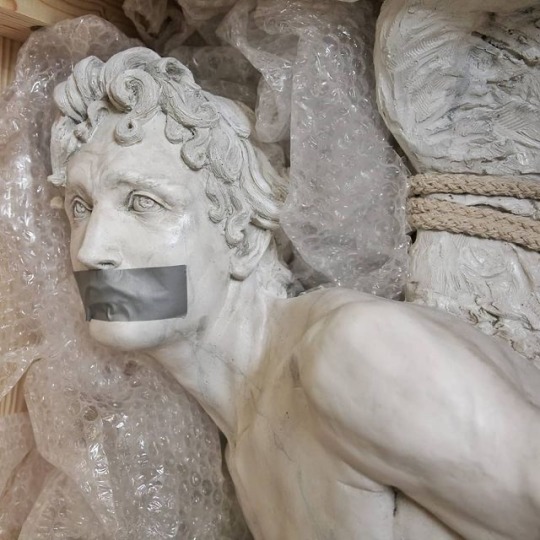

Amore Kidnapped
— by Daniele Accossato
#whump#sculpture#art#whumpee#angel#statue#angst#whumpblr#dark academia#light academia#museum#angel statue#angel sculpture#aesthetic#whump community#whump blog#artist#dark academia aesthetic#art history#whump prompts#whump tropes#whump prompt#whump trope#prompts#tropes#prompt#trope
7K notes
·
View notes
Text
Sam is fucking done.
She moved to Gotham because fucking obviously she would. It even has the name "Goth" in it. She loves it, it's a crazy place; not as crazy as Amity, but crazy enough to stave off the homesickness.
She's actually met Ivy, and very nearly embarrassed herself asking for an autograph.
She loves Gotham.
It feels like she was always meant to be there; she's not out of place, she's not too violent for them, her grave humor is appreciated and her coworkers say she's the funniest person in office.
But there was one aspect of Gotham she was done with.
The fucking Bats landing on the fucking roof of her penthouse at three in the morning to chat. They stomped around, their voices kept waking her up (thanks liminally enhanced hearing!), and worst of all; they chipped one of the gargoyles that stood over her bedroom window with a grappling hook.
So she resorted to petty revenge. She voluntarily lost sleep to do it.
She hid on her own roof, and snapped pictures of the Bats nonstop. Of Batman specifically, since he'd started the whole vigilante thing with them and it was entirely his fault.
Then, she photoshopped the ears off of Batman's costume.
She posted them on a blog she forced Tucker to make her (secured, isolated, untraceable), wiped the metadata with a program also from Tucker, and uploaded them. Every night.
It gets addicting.
Soon, she's made it a hobby. She stays out and stalks the Big Bad Bat, taking unflattering photos of him and removing the ears in Photoshop, and posting them on the now very popular blog.
It comes to a head one night when Batman is being forced to choose between two of the Bats, the blue one and the short red one, and he's clearly actually distraught at the choice.
Fuck.
She's gonna have to get involved.
#dpxdc#dcxdp#dp x dc#dc x dp#phanfic#story prompt#jason and dick call her Tim 2.0#Tim is conflicted because now he's on the other side of the lense#damian is annoyed#but also he's actually amused and just doesn't laugh in front of bruce#the blog has gained popularity in the justice league#bruce is so fucking annoyed with it
3K notes
·
View notes
Text
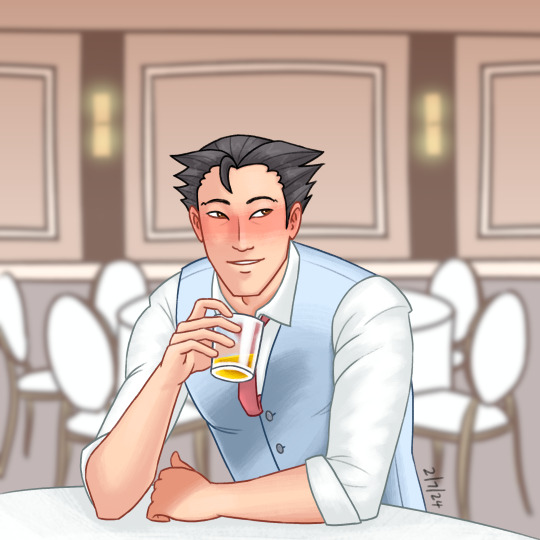
old fashioneds and tipsy daydreaming
bonus: the subsequent drunk texting

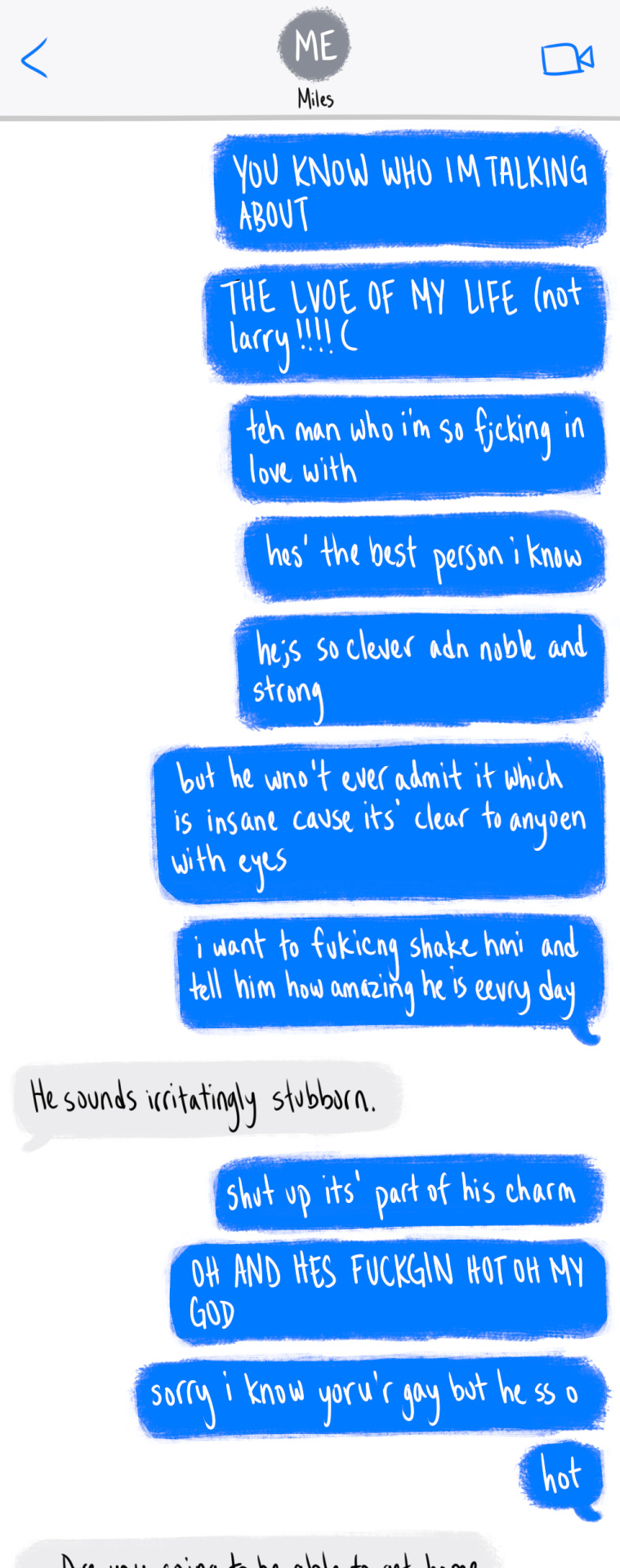
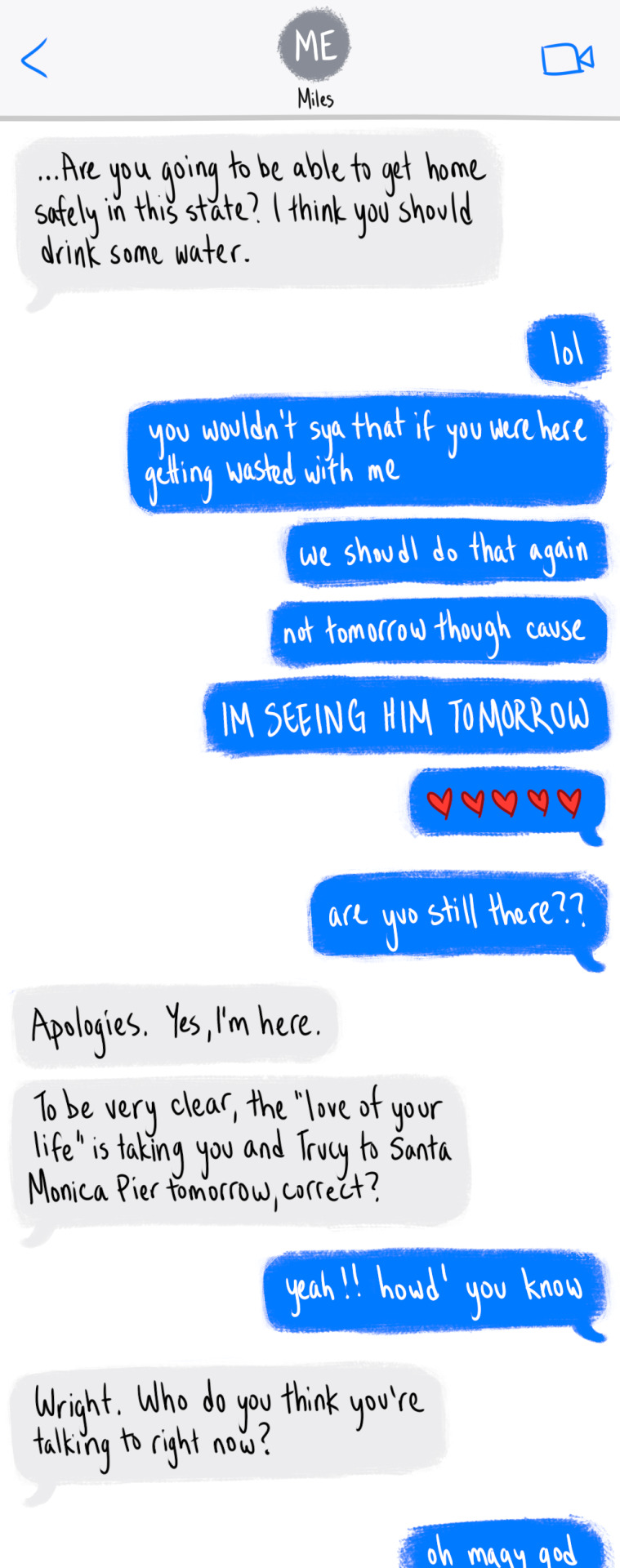

extra bonus, if you made it this far: what happens next, in fic form (spoiler: Phoenix and Miles kiss)
Behavioral Phenomenon | Phoenix/Edgeworth | 2.5k
#narumitsu#wrightworth#phoenix wright#ace attorney#citsiurtlanu art#citsiurtlanu fic#// haha wow a multimedia post#// this was originally just going to be just texts inspired by a prompt from the nrmt discord event#// and not actually for the discord event cause texts alone seemed like not enough but i didn't want to do more#// and then i was like i guess i should draw something so that it can go on my “art” blog#// and tipsy phoenix is a cute visual#// and then i was like ok but what if i actually... did do more#// so now there is fic too#// thank you discord event (more about that in the AO3 link)
1K notes
·
View notes
Text
13 notes
·
View notes
Text
Ultimate "Know Your Character Inside Out" Template
The ultimate template for creating a character, without losing your mind, while you're at it.
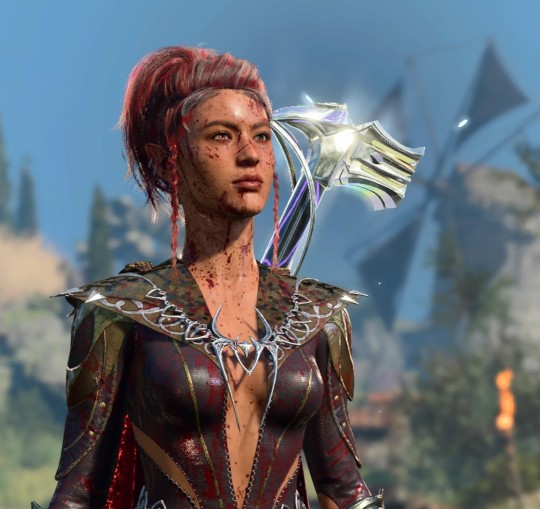
Character Background Template ... (open)
1. Name:
2. Age:
3. Gender & Pronouns:
4. Physical Appearance:
- Hair color:
- Eye color:
- Height:
- Build:
- Distinguishing features (scars, tattoos, etc.):
5. Background and Upbringing:
- Where were they born and raised?
- What was their family structure like (parents, siblings)?
- Describe their childhood environment and upbringing.
- Were there any significant events or traumas in their past?
6. Education and Skills:
- What level of education did they receive?
- Did they excel in any particular subjects or skills?
- Have they pursued any additional training or education since then?
7. Personality Traits:
- Describe their personality in a few words.
- What are their strengths and weaknesses?
- How do they typically react under stress or pressure?
8. Motivations and Goals:
- What are their short-term and long-term goals?
- What drives them to pursue these goals?
- Are there any fears or insecurities that motivate or hinder them?
9. Relationships:
- Who are the most important people in their life?
- How do they interact with family, friends, and acquaintances?
- Do they have any romantic interests or significant relationships?
10. Past Experiences:
- Have they faced any major challenges or setbacks in the past?
- How have these experiences shaped their beliefs and values?
- Have they experienced any significant losses or tragedies?
11. Worldview and Beliefs:
- What are their core beliefs and values?
- How do they view the world around them?
- Are there any cultural, religious, or philosophical influences in their life?
12. Inner Conflict:
- What internal struggles do they face?
- Are there any unresolved issues from their past that continue to affect them?
- How do these inner conflicts impact their decisions and actions?
13. Connection to Outer Conflict/Plot:
- How does their personal journey intersect with the main plot or external conflict?
- What stakes are involved for the character in the larger story?
- How do their goals and motivations align (or conflict) with the central conflict?
(Shorter) Knowing Your Character Inside Out Checklist
Personality Traits:
- Introverted/Extroverted
- Optimistic/Pessimistic
- Assertive/Passive
- Empathetic/Self-centered
- Logical/Emotional
- Adventurous/Cautious
- Honest/Dishonest
- Ambitious/Content
Beliefs and Values:
- Religious beliefs (if any)
- Moral code
- Political beliefs
- Views on relationships
- Attitude towards authority
Fears and Insecurities:
- Common fears (spiders, heights, etc.)
- Deep-seated insecurities (failure, rejection, etc.)
- Traumatic experiences (if applicable)
Desires and Goals:
- Short-term goals
- Long-term aspirations
- What motivates them to pursue these goals?
Strengths:
- Intellectual strengths
- Physical abilities
- Emotional resilience
- Social skills
- Unique talents or abilities
Weaknesses:
- Personal flaws
- Areas of vulnerability
- Bad habits
- Limiting beliefs
Backstory:
- Family background
- Childhood experiences
- Significant life events that shaped their identity
- Education and career path
- Previous relationships
-Josie
#writer community#writing#writing help#character template#original character#character creation#creative writing#writeblr#writerslife#writing community#writers on tumblr#writers of tumblr#writers#writing inspiration#writing prompt#writing prompts#writing tips#writing reference#character prompt#rp template#rp resources#writing advice#writing blog#on writing#writerscommunity#writing template#multiuse#creative process#character creation template#authors of tumblr
1K notes
·
View notes
Text
The Writer's Guide to Authentic Wounds and Fatalities
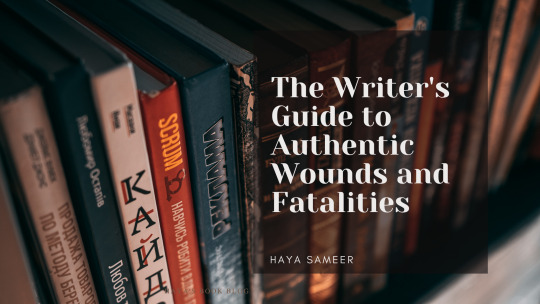
Writing fatal injuries in a story requires a delicate balance between realism and narrative impact. The portrayal of these life-altering events can evoke strong emotions in readers and shape the trajectory of your characters' journeys. In this blog, I will explore the intricacies of depicting fatal injuries in a manner that feels authentic, engaging, and respectful to the gravity of such circumstances. By understanding the nuances of fatal injuries, you will be equipped to craft compelling narratives that resonate with your readers.
Writing Fatal Injuries
When it comes to writing fatal injuries, it is crucial to approach the subject with care and accuracy. Fatal injuries carry immense consequences for your characters and can shape the trajectory of your story. By delving into the intricacies of portraying fatal injuries authentically, you can ensure that the gravity and impact of such events are effectively conveyed to your readers.
Choosing the right injuries for your story
Selecting the appropriate fatal injuries for your narrative involves considering various factors. Ask yourself: What purpose does this injury serve within the story? How does it affect the characters and the overall plot? Conduct thorough research to identify injuries that align with your story's context and resonate with the emotional journey of your characters.
For example, in a historical drama, you may research common fatal injuries during a particular era, such as battlefield injuries, diseases, or accidents prevalent at the time. In a crime thriller, you might explore the portrayal of fatal gunshot wounds or traumatic injuries resulting from violent encounters. By aligning the injuries with the context and themes of your story, you create a more immersive and believable experience for your readers.
Researching the mechanics of fatal injuries
To portray fatal injuries convincingly, it is essential to delve into the mechanics behind them. Understand the specific anatomical structures and systems involved, as well as the forces or mechanisms that can lead to fatal outcomes. Explore medical resources, consult experts if possible, and gather insights into the physiological and psychological implications of such injuries.
For instance, if your character suffers a fatal stab wound, research the anatomy involved, the potential organs affected, and the potential consequences such as internal bleeding or organ failure. By understanding the specific details and implications of the injury, you can describe the physical and emotional toll it takes on the character with greater accuracy and depth.
Depicting the immediate aftermath
When writing about fatal injuries, vividly describe the immediate aftermath to capture the intense emotions and physical realities. Consider the sensory details, the shock and disbelief experienced by characters, and the chaotic environment that often surrounds such events. Balancing realism with the needs of your story, create a scene that immerses readers and evokes empathy.
For example, if a character experiences a fatal car accident, you can depict the chaos at the scene, the character's disorientation, and the reactions of witnesses. Emphasize the sensory details such as the sound of screeching tires or the smell of burning rubber, creating a visceral experience for your readers.
Emotional and dramatic impact on the narrative
The impact of fatal injuries extends beyond the immediate moment. Explore the ripple effects on other characters, relationships, and the overall plot. Delve into the emotional responses, grief, guilt, anger, or determination that arises in the aftermath of loss. Utilize these emotional arcs to deepen character development and drive the narrative forward.
For instance, the loss of a loved one due to a fatal illness might lead to grief and strained relationships among the remaining family members. The emotional journey of a character grappling with guilt and seeking redemption after causing a fatal accident can become a central theme in your story. By delving into these emotional arcs and their consequences, you add depth and resonance to your narrative.
Writing Minor Injuries
While fatal injuries may capture our attention with their dramatic impact, it is equally important to pay attention to the portrayal of minor injuries in your writing. Minor injuries, though less severe, can still significantly affect your characters and contribute to the authenticity of your story. In this section, we will explore the art of depicting minor injuries, ensuring that they are not overlooked or trivialized. By delving into the nuances of minor injuries, you can add depth and realism to your characters' experiences.
Types of minor injuries to consider
When crafting your story, it is essential to consider a range of minor injuries that can occur. These injuries can include cuts, bruises, sprains, minor burns, or even minor fractures. Each type of injury carries its own unique characteristics, associated pain levels, and recovery processes. By understanding these distinctions, you can create accurate and believable depictions that resonate with your readers.
For example, a character who sustains a cut on their hand may experience sharp pain, the sight of blood, and the need for immediate first aid. On the other hand, a character with a sprained ankle may struggle with mobility, experience swelling, and require rest and care for a few days. By paying attention to these specific details, you can enhance the realism of your storytelling.
Conveying pain and discomfort
When writing about minor injuries, it is important to effectively convey the pain and discomfort experienced by your characters. Consider describing the sensation of pain, the throbbing or stinging feeling, and how it affects their daily activities or interactions. Showcasing the emotional impact of pain, such as frustration, irritation, or vulnerability, can deepen the readers' connection to the character's experience.
For instance, if a character suffers from a sprained wrist, you can describe the dull ache that persists, making simple tasks like typing or holding objects challenging. By capturing these small but significant moments, you immerse readers in the character's struggle and create a more realistic portrayal.
Balancing realism with narrative pace
While it is important to depict minor injuries realistically, it is also crucial to strike a balance with the overall pace and momentum of your story. Consider the significance of the injury within the larger context of your narrative. Some injuries may require more detailed attention and impact the plot, while others may serve as background elements. Adjust the level of detail and focus accordingly, ensuring that the portrayal of minor injuries aligns with the narrative's flow.
For example, a small cut on a character's finger may not require an extensive description unless it becomes infected or triggers an unexpected consequence. By aligning the portrayal of minor injuries with their narrative relevance, you maintain a consistent pace while still acknowledging their impact on your characters' lives.
Writing Bloodshed And Realistic Blood Loss
When writing about wounds and injuries, it is essential to consider the amount of blood loss your characters may experience. Realistic portrayal of bloodshed can enhance the authenticity of your scenes and immerse readers in the gravity of the situation. In this section, we will explore the factors influencing blood loss and techniques for accurately depicting it in your writing.
Understanding blood loss and its impact on the body
To authentically portray blood loss, it's crucial to have a basic understanding of how the human body responds to injury. Research the circulatory system and the role of blood in transporting oxygen and nutrients throughout the body. Consider the different types of blood vessels and their potential for bleeding when injured. This knowledge will help you create realistic scenarios and determine the appropriate level of blood loss for specific injuries.
Factors influencing blood loss in different injury scenarios
The amount of blood loss can vary depending on the severity and location of the injury. Factors such as the size of blood vessels, the rate of bleeding, and the body's ability to clot play a significant role. For example, a deep laceration in an artery will result in more substantial blood loss compared to a superficial cut on the skin. Consider these factors when describing injuries and their resulting bloodshed.
Techniques for accurately portraying blood loss in writing
There are several techniques you can use to convey the realistic impact of blood loss in your writing. Describing the color, consistency, and flow of blood can provide vivid imagery. You can also include physical symptoms such as dizziness, weakness, or fainting that may accompany significant blood loss. Additionally, consider the emotional response of your characters and how they react to the sight of blood or their own injuries.
By incorporating these techniques, you can create scenes that evoke a visceral response in readers and enhance the authenticity of your writing.
Bruises: Colors, Progression, and Pain
Bruises are a common result of injuries, and understanding how they form, change in color, and cause discomfort can greatly enhance the realism of your writing. By accurately describing bruises, you can bring depth to your characters' injuries and portray their healing process convincingly.
Understanding the stages and colors of bruises
Bruises go through distinct stages of color as they heal. Initially, they may appear red or purple due to the broken blood vessels beneath the skin. Over time, the color changes to blue, green, yellow, and eventually fades to a brown or yellowish hue. Understanding this color progression can help you accurately describe the age of a bruise and the healing process.
For example, a fresh bruise might be vivid purple, indicating recent trauma, while a fading bruise may have a yellowish tinge, suggesting that healing has begun. By incorporating these color details, you can add realism to your characters' injuries and track the passage of time within your narrative.
Depicting the progression of bruises over time
As bruises heal, they often change in appearance and size. Initially, a bruise may be small and localized, but it can gradually spread and become more extensive. Describing this progression can provide a sense of the healing process and the passage of time within your story.
For instance, a character who sustains a significant blow to the face may develop a bruise that starts as a small spot near the eye but expands to cover a larger area over the next few days. By accurately portraying the progression of bruises, you enhance the authenticity of your characters' injuries and their recovery.
Conveying the pain and sensitivity associated with bruises
Bruises can be painful, sensitive to touch, and affect a character's movement and daily activities. Describing the pain and discomfort experienced by your characters can create empathy and immerse readers in their physical ordeals.
Consider conveying the tenderness of a bruise when pressure is applied, the throbbing sensation, or the limitation of movement due to the pain.
Remember The Side Effects
Injuries, whether minor or severe, often come with a range of side effects that can significantly impact your characters' lives. These side effects can extend beyond the physical realm and encompass emotional, psychological, and social aspects.
Physical side effects
Injuries can have profound physical side effects that go beyond the immediate pain and discomfort. Consider the potential consequences such as limited mobility, impaired coordination, chronic pain, or the need for assistive devices like crutches or braces. Describing these physical side effects can add depth to your characters' struggles and provide a realistic portrayal of their healing journey.
For example, a character who sustains a leg injury may experience difficulty walking, require physical therapy, or have long-term complications that affect their day-to-day activities. By addressing these physical side effects, you create a more nuanced depiction of the aftermath of injuries.
Emotional and psychological side effects
Injuries can have a profound emotional and psychological impact on characters. They may experience fear, anxiety, trauma, or a loss of confidence. Consider how the injury affects their self-image, relationships, or mental well-being. Explore the emotional journey your characters undergo as they navigate the aftermath of their injuries.
For instance, a character who survives a near-fatal accident may develop post-traumatic stress disorder (PTSD) and struggle with recurring nightmares or panic attacks. By incorporating these emotional and psychological side effects, you can deepen the complexity of your characters and their responses to traumatic experiences.
Social implications and changes
Injuries can also lead to significant social changes for your characters. They may face challenges in their personal relationships, encounter stigma or discrimination, or experience changes in their roles or identities. Explore how the injury affects their interactions with others and their sense of belonging in the world.
For example, a character who sustains a facial injury may encounter judgment or stares from others, leading to self-consciousness or isolation. By addressing the social implications and changes resulting from injuries, you can create multi-dimensional characters and explore the impact of their injuries on their social dynamics.
By incorporating these various side effects into your writing, you bring depth and authenticity to your characters' experiences and showcase the wide-ranging impact of injuries.
Conclusion
Writing authentic wounds and fatalities requires attention to detail and a deep understanding of the physical, emotional, and psychological aspects involved. By following the guidelines and exploring the subheadings discussed in this guide, you can create compelling and realistic portrayals of injuries in your writing.
Remember to conduct thorough research on the specific injuries you want to depict, understanding their mechanics, symptoms, and potential outcomes. Consider the immediate and long-term effects on your characters, both physically and emotionally. Incorporate sensory details to immerse readers in the experience, describing the pain, bloodshed, colors of bruises, and the progression of healing.
Additionally, don't forget to address the side effects that injuries can have on your characters' lives. Explore the physical limitations, emotional struggles, and social implications that arise from their injuries. By delving into these aspects, you can create well-rounded characters and compelling narratives that resonate with readers.
I hope this blog on forging epic battles will help you in your writing journey. Be sure to comment any tips of your own to help your fellow authors prosper, and follow my blog for new blog updates every Monday and Thursday.
Looking For More Writing Tips And Tricks?
Are you an author looking for writing tips and tricks to better your manuscript? Or do you want to learn about how to get a literary agent, get published and properly market your book? Consider checking out the rest of Haya’s book blog where I post writing and publishing tips for authors every Monday and Thursday! And don’t forget to head over to my TikTok and Instagram profiles @hayatheauthor to learn more about my WIP and writing journey!
#hayatheauthor#haya's book blog#haya sameer#haya blogs#writers on tumblr#writer community#writer tools#writer blog#writer stuff#writer wednesday#writer tips#creative writing#writers of tumblr#writerscommunity#writeblr#writing community#writer spotlight#writer things#writing prompt#writing tools#writing stuff#writing#writing life#writing inspo#writing help#writing advice#writing inspiration#writing ideas#writing things#writing tip
4K notes
·
View notes
Text
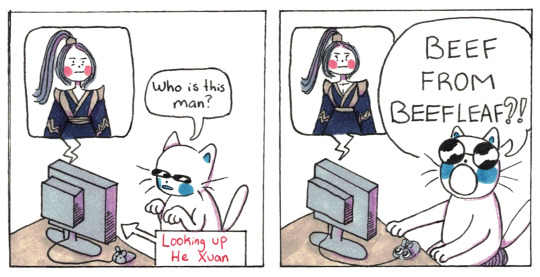
"What do you mean their name isn't Beef?"
(for @moondal514)
#TGCF#he xuan#I only know TGCF through having multiple people try and explain it to me + watching S1 of the animated series.#And fandom osmosis of some characters and plot points.#So I had a genuine 'A platypus? *PERRY* the platypus?' moment when doing research for this prompt.#My method for drawing novel characters is to read their description + personality and make a few drafts from there.#Sometimes I get curious and look up official art on a wiki. Ensue the: “huh who is this (sees the female form) I KNOW WHO THIS IS”#Anyways this is actually just a warm up. An unprecedented part 2 comes tomorrow.#Because the journey of “How *would* I draw he xuan?” took me on a wild journey that nearly drove me into madness.#Spoilers: its not how I drew HX in this comic. It's more...on brand for this blog. Lets leave it there. Everyone gets a 24 hour warning.#Thank you Moondal514 for pushing me into the deepest waters on this one. I am forever changed.
2K notes
·
View notes
Text
things to add to your journals
song lyrics for a specific mood
spotify codes for favourite songs
receipts from a trip
envelope for gifts from any small children you know
pages to press flowers in
ticket stubs
fortune cookie readings
daily three-card tarot pulls
watercolour paper for art
page cutouts
watercolours just in general
pressed flowers
other dried herbs
sketches (taped or glued in)
morning/evening routines
colour in the leftover paper backing from stickers and glue/tape it in
friendship bracelets that may have broken or come off
grocery lists or other shopping lists (glue in if written on other paper)
book quotes
block poetry (you'll have to take a page out of a book for this)
mental health goals
halloween: candy wrappers
fabric scraps
family recipes
different textured papers
stamps
coins
#study blog#studyblr#academic#bullet journal#study aesthetic#bullet journal inspo#journal prompts#journal#bujo#bujo community#bujoaddict#journal ideas
8K notes
·
View notes